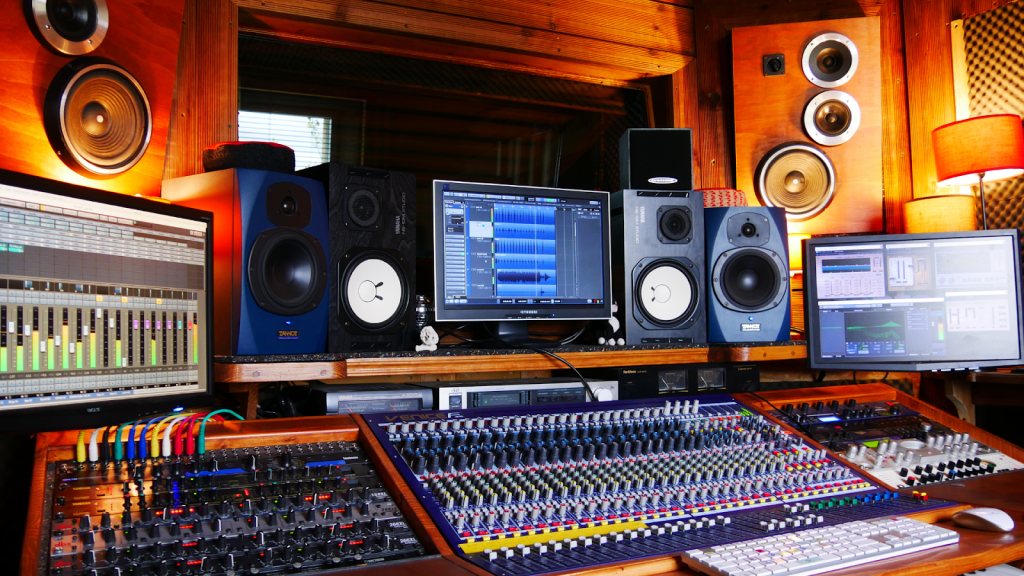Great music production isn’t just about expensive gear or the latest plugins—it’s about technique. The best producers in the industry know how to get the most out of their artists, equipment, and recording environment using tried-and-true methods that bring out the magic in a performance.
The good news? These techniques aren’t reserved for big-name studios or Grammy winners. With practice, patience, and the right mindset, you can apply these same approaches in your own setup—whether you’re working out of a professional studio or your bedroom.
Here are five recording techniques used by top producers that you can learn and start using right away.
1. Microphone Placement Is Everything
It might sound simple, but mic placement is one of the most critical (and often overlooked) aspects of recording. Where you position the mic can dramatically affect the tone, clarity, and overall vibe of the track.
Top producers experiment with distance, angle, and room reflection to find the sweet spot. For vocals, they might angle the mic slightly off-axis to reduce sibilance or move the singer a few inches back to capture more room tone. For drums or amps, changing the mic’s position by even an inch can completely alter the recording’s character.
Try this: When recording vocals or instruments, take the time to test a few different mic placements and compare the results. Use your ears—not just your eyes—to find what sounds best for the track.
2. Double-Tracking for Depth and Power
Double-tracking involves recording the same part twice (or more) and layering it to create a fuller sound. This technique is a staple in rock and pop productions, especially for vocals, rhythm guitars, and certain synth parts.
Top producers don’t just copy and paste takes—they have the artist re-record the part, then blend the layers. The subtle differences in timing and tone create a rich, dimensional sound that can’t be replicated by duplicating a track.
Pro tip: Pan the two takes slightly left and right for width. You can even add a third layer down the center for added depth and warmth.
3. Capturing the Right Performance—Not Just the Cleanest Take
One of the key differences between amateur and pro producers is knowing when to stop chasing perfection. Top producers understand that emotion trumps technical precision. They’ll often keep a take with a tiny imperfection if it conveys the right feeling.
Instead of obsessing over flawless pitch or timing, focus on helping the artist deliver a performance that connects. Encourage emotion, try different vocal approaches, or suggest lyrical tweaks to bring more authenticity to the recording.
Remember: A perfectly sung line with no emotion won’t resonate nearly as much as a heartfelt take with a bit of grit.
4. Using Room Ambience to Your Advantage
While many new producers try to eliminate room sound, professionals often embrace it. The natural reflections in a room—when captured intentionally—can add warmth, depth, and realism to a recording.
In fact, many top producers record in larger rooms, hallways, or even stairwells to get unique textures. They also use ambient mics to capture the vibe of the space alongside the direct signal.
Try this: Set up a second mic a few feet back when recording vocals or acoustic instruments. Blend it in lightly to add space and air to the mix. Just make sure the room sounds good—or consider adding treatment if needed.
5. Building a Comfortable, Creative Environment
One of the most underrated techniques top producers use isn’t technical at all—it’s psychological. Creating a relaxed, inspiring atmosphere can make all the difference in getting a great performance.
From dimming the lights and burning incense to offering breaks and casual conversation, producers know how to put artists at ease. When musicians feel safe and heard, their performances naturally improve.
Your takeaway: Pay attention to your studio environment. Is it cluttered, sterile, or stressful? Make small changes to help artists (or yourself) feel more comfortable, creative, and confident.
Learn, Apply, Repeat
The truth is, world-class producers aren’t born with magic ears—they develop these techniques through experience, experimentation, and education. By practicing the methods above, you’ll begin to hear improvements in your recordings and build a deeper understanding of what makes a track work.
If you want to take your skills even further, enrolling in a structured studio recording program can fast-track your growth. These programs teach you how to apply professional techniques, use industry-standard tools, and produce music with confidence—whether you’re behind the board or behind the mic.
Being a great producer isn’t about having the most expensive gear—it’s about knowing how to use what you have to capture great sound. These five techniques are foundational tools that top producers use every day—and now you can too.
Whether you’re working with clients or crafting your own music, mastering these skills will help you create recordings that not only sound polished but also feel powerful and authentic.
So plug in, hit record, and start producing like a pro—one track at a time.
You may also like
-
High-Quality RTO Learning Materials Designed for Compliance and Practical Training Success
-
Level Up Your Classroom: Kahoot Alternatives for Advanced Gamification & Collaborative Learning
-
English Enrichment Strategies to Boost Reading and Writing
-
Empower Your Reading Journey with Orton Gillingham Methods
-
Why Choose Our Professional School of Trucking

